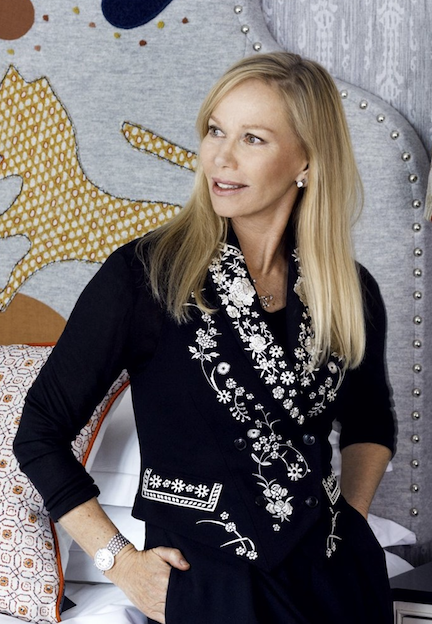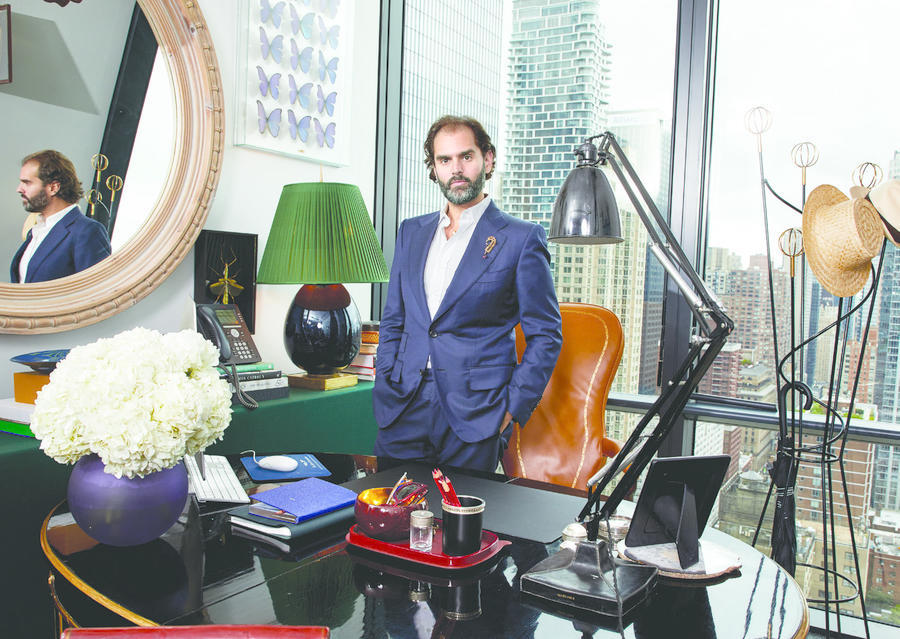This year on the BOH podcast, host Dennis Scully sat down with figures from every corner of the design world—from legendary designers and business leaders to editors shaping the media landscape. As 2019 comes to a close, we’re looking back at eight of the best moments from the podcast.
DESIGNERS

Kit Kemp on collaborating: “If you’re commissioning people to work for you, you mustn’t put them in an arm lock, you have to give them space. You’ve got to decide you like their work, and work with them and give them free rein. Hopefully the final piece will be better than your original idea.”
Charlotte Moss on creative solutions: “[A client] wanted cashmere curtains and I said, Well, that’s not within the budget. So I went to one of these uniform companies ... and we found a loden-green flannel, that was absolutely scrumptious—felt like cashmere, but was like $50 a yard. ... You had to think about: Where else might these things come from? … How do you take something ordinary and make it fabulous?”
BUSINESS LEADERS
Philip Erdoes on financial resilience: “When [the market] turns down, you need to spend on equipment to make yourself a hell of a lot more efficient and effective, and to differentiate. It’s not like home furnishings is going down to zero. … If there’s a turndown, I need to make myself better, not stay the same or make myself worse. Smart people and smart businesses can do well—up or down.”
Michael Phillips of Jamestown on accepting high-low price points: “High-low is real. Why isn’t the design industry paying attention to that? At least 10 percent of the product in most notable designer projects comes from mail-order catalogs … whether it’s throw pillows, area rugs [or] the lampshade. If we think everything is coming directly from the design centers, we’re really sadly mistaken. The showrooms in the industry need to be part of that.”

Chad Stark on prioritizing customers: “There’s nothing more threatening to a business than not being customer-centric. No technology [alone] can put you out of business. Netflix’s technology didn’t put Blockbuster out of business. Blockbuster thinking they knew everything and didn’t need to change put them out of business. Whether they can buy from us today or not, we need to make sure [consumers] know our brand. The two biggest threats to our business are that people will stop using designers—which I don’t think will happen—and that we can’t relate to the next generation of consumers.”
Cheryl Durst on educating clients: “The irony of design is it is solving for most clients a very immediate problem, and so in the mind of the client, it’s kind of one-and-done. That doesn’t help us in that long road of helping people understand that design is much longer-term. We talk about the fact that designers need to be lifelong learners—they also need to be lifelong educators. Every conversation with every client is educating them about the value of what design can ultimately do for their lives.”
EDITORS
Joanna Saltz on democratizing design: “One of the things I learned from Delish is that you can be a lot of things to a lot of different people. There are ways for us to engage people in conversation that don’t necessarily have to be run-of the-mill. I want House Beautiful to be about attainable inspiration, and I want people to feel comfortable being a part of the conversation. Design isn’t just for the creative elite—design can be for everyone.”

Whitney Robinson on transparency: “[Young people] think, ‘I can get a VIP driver, its name is Uber; I can get a VIP chef, its name is Postmates; and I know exactly how much things cost at every level.’ … It’s out there and it’s transparent. [In the design industry,] no one knows how anyone should bill, no one knows how much things cost, everything’s sort of available on the internet but not really. There’s this opaqueness to the whole thing and it makes this younger generation who will eventually be the customer be like, ‘Well, that’s stupid’ or ‘That’s old-fashioned.’”



























